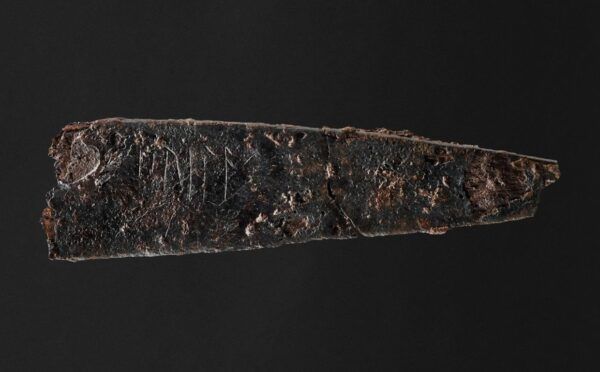#Great #Discoveries #Iron #Knife #Features #Ancient #Denmark #Runes #WorthPoint

Image Source: AFP via The Star
Archaeologists recently discovered a small iron knife in Denmark from around 150 AD. The nearly 2,000-year-old knife has runic letters and is believed to be Denmark’s oldest example of writing.
The knife itself is “not remarkable,” said archaeologist Jakob Bonde. However, the five runic letters on the blade “are the oldest we have from Denmark,” Bonde added.
Runic letters, also called runes, were part of Scandinavia’s oldest alphabet. These letters were commonly used in the 1st or 2nd century in northern Europe. They were replaced by the Latin alphabet in the 10th century.
The five runic letters on the knife spell “hirila,” which translates to “small sword.”
Bonde noted the person who owned the knife was likely a warrior or wanted to be one. He described the knife’s blade as a “note from the past.” Bonde also said the knife provides insights into how the oldest known language in Scandinavia developed and how people may have communicated with one another during the first and second centuries.
Previously, a small comb was discovered in 1865 that included runes from the same period as those on the knife’s blade, Bonde stated. Additionally, runestones containing long inscriptions from the 10th century have been found in Jelling, Denmark.
Bonde said that outside of the comb and runestones, there are no large inscriptions or other examples of writing in Scandinavia similar to the runes found on the knife’s blade.
Those who want to see more ancient knives can view thousand of military and folk examples in the WorthPoint Price Guide.
Dan Kobialka is a self-employed content writer and editor with about a decade of experience. He produces content across a wide range of industries, including antiques, insurance, and real estate. To learn more about Dan, please visit his website.
WorthPoint—Discover. Value. Preserve.




